|
|
HEALTHY HAPPENINGS - July 2022
|
My Survivor Story
by Tami Edwards
|
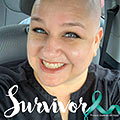 In my pre-cancerous life, I was a very healthy and active individual. I had done everything right, according to everything I read after my first diagnosis. Yet, cancer still found me. In 2007, at 33, I found a small bump in my left breast, in the upper, inner quadrant. At first I thought it was just a pimple and I would pick at it. It would bleed, then grow a little more. I was in a very bad marriage at the time and couldn’t really focus on my own health. I ignored it until it started to hurt. I finally showed it to a coworker who scheduled my appointment with my OBGYN that day. When he saw me, he thought it may be a cyst but referred me to a general surgeon, whom I saw 2 days later. When that doctor tried to aspirate the “cyst”, and couldn’t pull fluid out, he looked at me and said, “I believe this is cancer.” Something in me already knew that. In my pre-cancerous life, I was a very healthy and active individual. I had done everything right, according to everything I read after my first diagnosis. Yet, cancer still found me. In 2007, at 33, I found a small bump in my left breast, in the upper, inner quadrant. At first I thought it was just a pimple and I would pick at it. It would bleed, then grow a little more. I was in a very bad marriage at the time and couldn’t really focus on my own health. I ignored it until it started to hurt. I finally showed it to a coworker who scheduled my appointment with my OBGYN that day. When he saw me, he thought it may be a cyst but referred me to a general surgeon, whom I saw 2 days later. When that doctor tried to aspirate the “cyst”, and couldn’t pull fluid out, he looked at me and said, “I believe this is cancer.” Something in me already knew that.
A mammogram revealed a very strange looking mass. A biopsy a week later brought the official diagnosis of breast cancer and I was scheduled for surgery. On March 28, 2008, I didn’t know going into the surgery if I’d have a 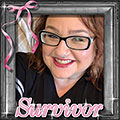 lumpectomy or a mastectomy; it would depend on my lymph nodes. Fortunately, those were clear and I only lost a golf ball sized chunk from my body. My oncologist planned my chemo treatments, 1 round every 3 weeks for 6 cycles, to be followed with 33 rounds of radiation. Then he told me I should do genetic testing because of my Ashkenazi Jewish heritage (all Eastern European). Five weeks later I found out that I am BRCA1, which carries with it a long list of other potential cancers and problems. At this time, I was the only one in my family who had ever been diagnosed with breast cancer. Most of my family had been killed in the Holocaust and so our history was limited. I was told to have a double mastectomy and total hysterectomy but I was only 33. I wanted more kids. So I opted to keep my own parts. And life went on. lumpectomy or a mastectomy; it would depend on my lymph nodes. Fortunately, those were clear and I only lost a golf ball sized chunk from my body. My oncologist planned my chemo treatments, 1 round every 3 weeks for 6 cycles, to be followed with 33 rounds of radiation. Then he told me I should do genetic testing because of my Ashkenazi Jewish heritage (all Eastern European). Five weeks later I found out that I am BRCA1, which carries with it a long list of other potential cancers and problems. At this time, I was the only one in my family who had ever been diagnosed with breast cancer. Most of my family had been killed in the Holocaust and so our history was limited. I was told to have a double mastectomy and total hysterectomy but I was only 33. I wanted more kids. So I opted to keep my own parts. And life went on.
Fast forward a little bit. I never did have any more kids. I was rendered essentially infertile from the chemo treatments and left that bad marriage in 2009. I had developed a drinking problem at the end and finally got sober in 2011, meeting my current husband in the rooms of AA. We married in 2014. I had both knees replaced in 2016 due to osteoarthritis brought on by the chemo. It had definitely aged my insides even if I still looked my stated age. In 2016 I was 41. In 2017, we relocated from California to Texas and I gained a lot of weight from the depression that set in. I had already started perimenopause and I was unhappy with my weight and my life.
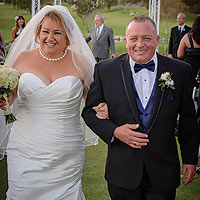 In July of 2019, I had a cycle that started and then didn’t finish. At first I assumed it was due to the “change”. But then the bleeding got heavier and I was getting weaker and I finally called my doctor (my new GYN in Texas) and he put me on hormones to stop the bleeding and then we did a uterine biopsy. I was now 45 and figured it was time to let go of the idea of being a mom again. I was accepting that it was time to remove the plumbing, because there was no way I could continue with cycles like that for long. We decided on February the following year but 2 days later my biopsy results came back positive for uterine cancer. There was a question as to whether or not it was related to the gene but nothing would be known until my total hysterectomy on October 9, 2019. When I saw the surgeon two weeks later, he confirmed that it had also been found in my right ovary (I knew deep down it would be), a separate primary cancer, and we knew that the gene was responsible. In July of 2019, I had a cycle that started and then didn’t finish. At first I assumed it was due to the “change”. But then the bleeding got heavier and I was getting weaker and I finally called my doctor (my new GYN in Texas) and he put me on hormones to stop the bleeding and then we did a uterine biopsy. I was now 45 and figured it was time to let go of the idea of being a mom again. I was accepting that it was time to remove the plumbing, because there was no way I could continue with cycles like that for long. We decided on February the following year but 2 days later my biopsy results came back positive for uterine cancer. There was a question as to whether or not it was related to the gene but nothing would be known until my total hysterectomy on October 9, 2019. When I saw the surgeon two weeks later, he confirmed that it had also been found in my right ovary (I knew deep down it would be), a separate primary cancer, and we knew that the gene was responsible.
I went through chemo again, same schedule, different drugs. Fortunately I did not have to have radiation (radiation in my hoo haw??? Who wants that?). I gained more weight from the steroids and now that I’m officially in menopause, it’s stuck to me. And we moved to Utah in June, 2021.
I lost my mom to stage 4 breast cancer on 1/22/14. She had been too ill to meet Robert. She hadn’t wanted to get checked when I had the gene and when she was diagnosed, 3 years after me, it had already spread like wildfire throughout her body. I lost one of my best friends to lung cancer 12/23/20. She had always been too busy to see a doctor and when she was diagnosed, it was also too late. She only lived 9 months. I have lost many other friends to the awful disease of cancer, and some were seemingly preventable.
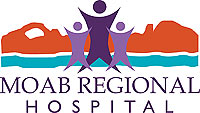 After my breast cancer, I took ownership of my life. If something doesn’t feel right, doesn’t look right, I go to a doctor. I’d rather it be nothing than find out later it’s too late and I should have done something sooner. Had I waited just two more weeks, the cancer would have invaded my chest wall and I likely wouldn’t be here. My daughter was 13 at that time. I would have missed out on so much. And that gene is still active in this body, waiting to attack something else. I have to stay vigilant. After my breast cancer, I took ownership of my life. If something doesn’t feel right, doesn’t look right, I go to a doctor. I’d rather it be nothing than find out later it’s too late and I should have done something sooner. Had I waited just two more weeks, the cancer would have invaded my chest wall and I likely wouldn’t be here. My daughter was 13 at that time. I would have missed out on so much. And that gene is still active in this body, waiting to attack something else. I have to stay vigilant.
I’m a big advocate for cancer research, of all types. I used to do charity walks (until the knees) to raise money for the American Cancer Society. I’d like to try that again. And I share my story with anyone who will listen. One in eight women will be diagnosed with breast cancer at some point in their lifetime. But the odds vary among races. One in 40 Ashkenazi Jewish women will face the diagnosis compared to 1 in 500 Asian women. No one wants to be the “lucky” one. So get checked. Do your annual exams and your mammograms. Feel your boobies! But also keep in mind that uterine cancer is one of the most prevalent female cancers. And we are so dismissive! We shouldn’t be. Your odds of survival are so much higher when things are caught early, and the treatments are easier, too. If something doesn’t feel right, get it checked out.
|
Local Newlyweds Start
Mobile iV Therapy Company
by Moab Mobile iV
|

Moab locals Brittany Cantwell and Glen Maxson are used to BASE jumping off the cliffs surrounding Moab, but now, they are jumping into a new adventure. The newlywed couple has started a new business, offering mobile IV therapy to both residents and visitors of the Moab area.
Brittany says the idea for the business came after riding the 100+ mile long White Rim trail on a particularly hot September weekend.
Glen remembers it being after he took a wrong turn on a trail and ran an “accidental half marathon with no water”.
The couple may not agree on when the exact “Ah-ha” moment was, but they will agree that they saw a need for a new service and Moab Mobile iV was born.
Providing intravenous therapy is nothing new for these two. Brittany obtained her RN license in 2016 and has been working as a nurse (RN,BSN) in Moab for the past 5 years. Glen is a paramedic with 14 years on the job. They also work with a local physician who oversees operations as the company’s medical director.
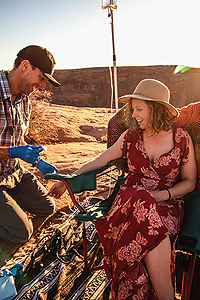 The client spending a big day outside; hiking, biking, climbing, or off-roading, and realizing she/he needs to rehydrate fast and efficiently was the original customer that inspired this business. “When you get to a point of dehydration that isn’t hard to reach in the Moab environment, it takes a long time to get back to a healthy level of hydration and feeling good. Most visitors to Moab or locals who love to play hard outside don’t have that kind of time. IV therapy is the fastest, most efficient way to provide your body with the fluids and electrolytes needed to rehydrate and feel your best.” -Glen The client spending a big day outside; hiking, biking, climbing, or off-roading, and realizing she/he needs to rehydrate fast and efficiently was the original customer that inspired this business. “When you get to a point of dehydration that isn’t hard to reach in the Moab environment, it takes a long time to get back to a healthy level of hydration and feeling good. Most visitors to Moab or locals who love to play hard outside don’t have that kind of time. IV therapy is the fastest, most efficient way to provide your body with the fluids and electrolytes needed to rehydrate and feel your best.” -Glen
“And it’s not just about hydration.” Brittany says “A large portion of our customers are looking at IV therapy as a way to take better care of their immune systems and overall health. The wellness package, a powerhouse of vitamins and electrolytes, is our most popular package by far!” When you take vitamins by mouth, they must be absorbed through your digestive tract, a process that can be extremely inefficient. Only a very small percentage of vitamins taken orally make it to your blood stream where they can be used by your body. When you get vitamins or medications through IV therapy, 100% of the product is “bio available” or goes into your blood stream where it can be used throughout your body." -Brittany
The couple says operating Moab Mobile iV has been one of the most positive experiences of their professional careers. “We love helping people feel better, and we feel incredibly grateful that people trust us to come into their homes, listen to their specific needs, do a physical assessment, and help them to feel their best.” -Brittany
To learn more or schedule an appointment with Moab Mobile iV, go to their website at www.moabmobileiv.com
|
Concussion: Treat It Now,
Keep Your Brain Later
by Ray Andrew, MD |
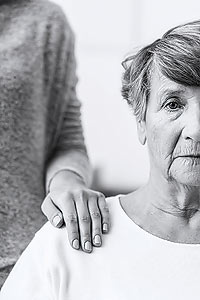 Mike took a spill on his bicycle recently. He wasn’t going very far, so he didn’t want to waste the time to look for his helmet. Hitting his head and injuring his shoulder and elbow on the sidewalk, he took a couple minutes to get back on his feet. He managed to ride the rest of the short distance to his destination. Upon arriving, however, he was not making sense to those around him. He was taken to the hospital and evaluated with examination and a CT scan. Mike took a spill on his bicycle recently. He wasn’t going very far, so he didn’t want to waste the time to look for his helmet. Hitting his head and injuring his shoulder and elbow on the sidewalk, he took a couple minutes to get back on his feet. He managed to ride the rest of the short distance to his destination. Upon arriving, however, he was not making sense to those around him. He was taken to the hospital and evaluated with examination and a CT scan.
When everything came back normal, Mike was diagnosed with a concussion and sent home to rest. He was instructed to avoid any stimulation and stay out of school until cleared by his doctor. For weeks, he couldn’t focus enough to complete his homework and his behavior was inappropriate if not outright defiant at times.
Immediate and short-term consequences of concussions vary widely. Common symptoms include memory loss, headache, sleep disturbances, irritability, fatigue, nausea, difficulty concentrating, brain fog, depression, anxiety, nausea/vomiting, light-headedness, dizziness, and sensitivity to light or noise.
Most symptoms subside on their own within days to weeks. When they persist for months or years, doctors diagnose post-concussion syndrome. But this isn’t the worst we can expect from non-crippling head trauma. This is because the original injury is just the beginning of the damage to the brain. Thereafter, secondary brain damage can result from free radicals, release of neurotransmitters, inflammatory responses, calcium-mediated damage, mitochondrial dysfunction, and gene activation.
Concussion has been in the spotlight in recent years, following the recognition that a single concussion at any time in a person’s life more than doubles his or her risk of dementia. This is true even when the concussion does not include loss of consciousness. Whereas dementia is the most notable long-term consequence of traumatic brain injury (TBI), several others have been identified. These include psychiatric problems (depression, anxiety, psychosis, etc.), behavioral changes, movement disorders, Parkinson’s, alcohol abuse, intestinal hyperpermeability (“leaky gut”), testosterone deficiency, erectile dysfunction, and much more. Intestinal hyperpermeability alone increases risk of ADHD, hay fever, obesity, eczema, asthma, food sensitivities, autoimmune diseases, heart disease, and more. In other words, if its effects on the brain aren’t enough, TBI can affect every aspect of one’s health.
 As society begins to pay attention to the serious consequences of even mild head injuries by building more protection into physical activities and exercising increased caution in return-to-play guidelines (in the case of organized sports), treatment of these injuries remains woefully inadequate. As confirmed by an Institute of Medicine report in 2001, “an average of about 17 years is required for new knowledge generated by randomized controlled trials to be incorporated into practice.” In the case of TBI, many if not most physicians continue to recommend that patients lay in bed and avoid reading, listening to music, watching television, talking, and any physical activity. Symptoms that are intolerable or otherwise interfere with daily activities are managed with pain medicine, nausea medicine, dizziness medicine, sleeping pills, antidepressants, physical or occupational therapy, and so forth. In other words, no TBI-specific treatment has been recognized and promoted by the major medical societies. The reason for this is simple: There is no drug that repairs damaged neurons. As society begins to pay attention to the serious consequences of even mild head injuries by building more protection into physical activities and exercising increased caution in return-to-play guidelines (in the case of organized sports), treatment of these injuries remains woefully inadequate. As confirmed by an Institute of Medicine report in 2001, “an average of about 17 years is required for new knowledge generated by randomized controlled trials to be incorporated into practice.” In the case of TBI, many if not most physicians continue to recommend that patients lay in bed and avoid reading, listening to music, watching television, talking, and any physical activity. Symptoms that are intolerable or otherwise interfere with daily activities are managed with pain medicine, nausea medicine, dizziness medicine, sleeping pills, antidepressants, physical or occupational therapy, and so forth. In other words, no TBI-specific treatment has been recognized and promoted by the major medical societies. The reason for this is simple: There is no drug that repairs damaged neurons.
The fact that the “wait-and-see approach” to TBI continues to prevail in American medicine is most unfortunate. There is published evidence, for example, that initiation of moderate-intensity aerobic exercise within the first three days of injury improves multiple aspects of brain function and speeds recovery. But this is not all. The sooner a TBI sufferer begins a comprehensive program of brain rehabilitation, the better off he will be. He will be able to return to full pre-injury activities sooner, have less risk of post-concussion syndrome, and be less likely to develop dementia, Parkinson’s, or other irreversible brain dysfunction decades later. Short of the onset of dementia, however, it is never too late to start brain rehabilitation.
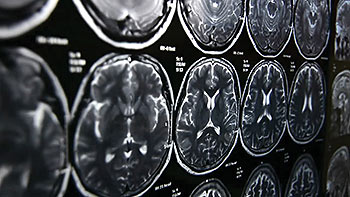
This is because injury to the brain sets in motion an inflammatory cascade that doesn’t have an “off” switch. Even when repair is complete and all symptoms are gone, damage to neurons continues for the rest of one’s life. Because we have an average of 86 billion neurons, we don’t readily notice the thousands of neurons that are constantly being lost to the inflammatory process. When we do begin to notice impairments in memory and/or thinking, we typically chalk them up to aging, not realizing we are on our way to dementia, and that it stemmed from one or more concussions decades ago.
For this reason, whenever a patient presents to Prestige Wellness Institute with a history of concussion, whether it happened yesterday or sixty years ago, we recommend an aggressive individualized program designed to squelch inflammation and restore full function (if any is lacking) as quickly as possible. If the injury is recent, early aerobic activity is encouraged. Additional interventions include—based on individual needs—pulsed electromagnetic field therapy, brain-nourishing nutrients, high-dose melatonin, fatty acids, anti-inflammatory herbs, neurofeedback, repair peptides, high-grade probiotics, gut repair, and oral or IV antioxidants. As research advances and new technologies become available, we continually refine our protocol to enhance brain function in affected people.
If you or someone you love has suffered one or more concussions at any point in your life and want to maintain optimal brain function well into your later years, consider consulting with us for an evaluation and rehabilitation program by calling (435) 210-0184.
|
|
|
|
|
|
|
|
© 2002-2024 Moab Happenings. All rights
reserved.
Reproduction of information contained in this site is
expressly prohibited.
|
|